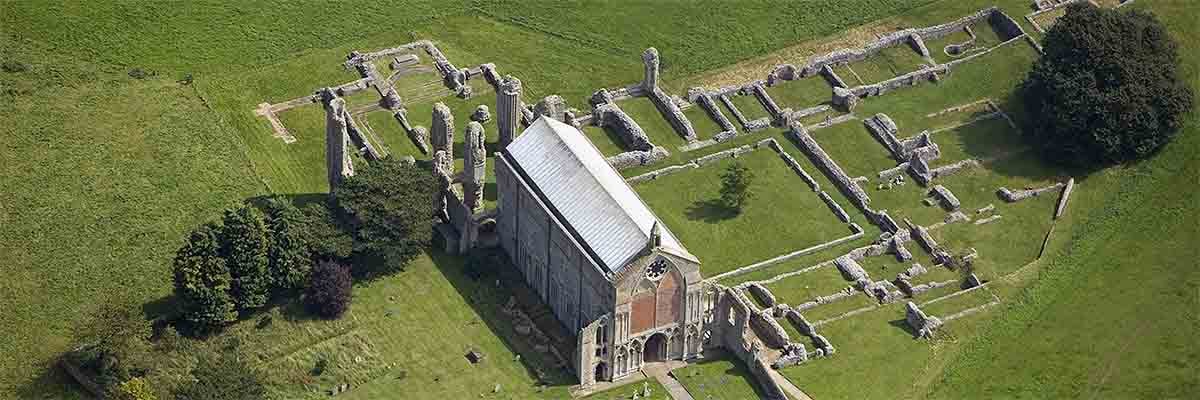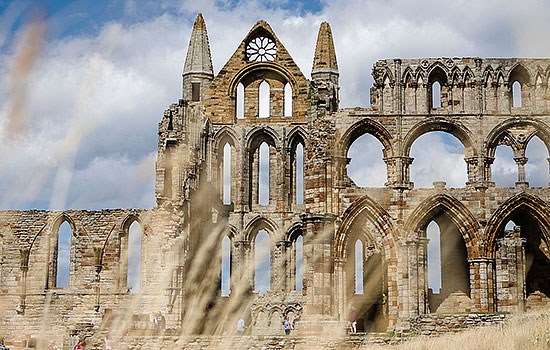History of Binham Priory
Binham Priory was founded in 1091 and was home to a Benedictine community of monks for over 400 years. Its history is one of almost continuous scandal. Many of its priors proved to be unscrupulous and irresponsible, and by the time of the priory’s suppression in 1539 the community had been reduced to just six monks. The nave of the priory church, with its striking 13th-century west front, remains in use as the local parish church.

The Medieval Priory
Binham Priory was founded in about 1091 by the Norman baron Peter des Valoines, on land given by Peter’s uncle, William the Conqueror (r.1066–87). The construction of the church spanned close to 150 years, starting in the 1090s. The buildings were adapted and extended throughout the medieval period. Prior Richard de Parco (1227–44), one of Binham’s more diligent priors, was probably responsible for beginning the magnificent west front of the church.
The community at Binham was always small, with 14 monks at its peak in 1320, dropping to 11 in 1381 and just 6 in the 1530s. The priory suffered from a succession of mainly unscrupulous and irresponsible priors. William de Somerton, who was prior from 1317 until 1335, sold many of the priory's valuable items in order to finance his alchemical experiments, leaving the priory £600 in debt.
Suppression and Later History
The monastery was closed in 1539 as part of the Suppression of the Monasteries under Henry VIII (r.1509–47). The priory was given to Sir Thomas Paston, a local man and an important royal servant, who dismantled most of the buildings in order to build a new house at Wells. Stone from the priory was sold and reused in many local houses, particularly around doors and windows.
Thomas Paston’s grandson, Edward, began to carry out further demolition works, with the intention of building a new house on the site. These plans were brought to an abrupt end when a workman was killed by falling masonry. This was considered a bad omen, and the project was abandoned.
The seven western bays of the nave were later sealed off from the rest and continued in use as Binham’s parish church, which with the support of the local community has survived to the present day.
Further Reading
Anon, Binham Priory: A Guide to the Priory Church of St Mary and the Holy Cross, Binham, Norfolk (Binham, 1991)
The Binham Priory website contains much useful information.


